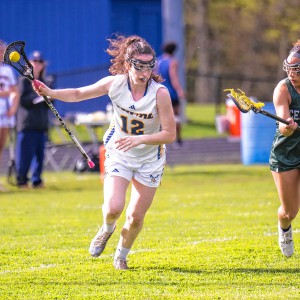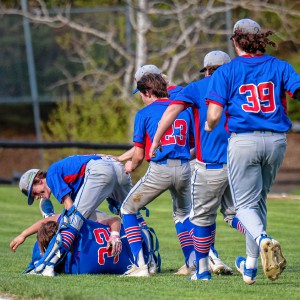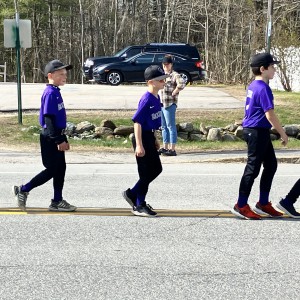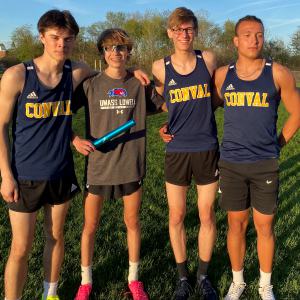Kim Bergeron and Jean-Pierre Bernier prepare for Iron Dog
|
Published: 01-25-2024 9:00 AM
Modified: 01-26-2024 10:47 AM |
Starting Feb. 17, Kim Bergeron of Dublin and Jean-Pierre “JP” Bernier of Hancock will be on snowmobiles facing the most-rugged terrain Alaska has to offer, where temperatures can get as low as minus-50 degrees.
The pair will be competing the Iron Dog, an annual snowmobile race held in Alaska. Both have previously completed the Expedition Class race, which covers about 1,100 miles of remote wilderness from Big Lake to Nome. This year, they’re moving up into the Pro Class.
Expedition Class racers can stop, take in the scenery, visit with the locals and accept support from any other Expedition Class team in the event of a mechanical failure. But the Pro Class?
“A whole different ball game,” said Bergeron.
Pro Class teams, who work in pairs, can only rely on each other for support. Iron Dog volunteers supply fuel and oil, but teams are responsible for the actual refueling and maintenance, as well as food, lodging and anything else that might come up during the race.
“We’re essentially in the middle of nowhere, with little infrastructure available to provide support. So if something goes wrong, we could be spending a day, or multiple days, out in the cold,” said Bernier. “We’re reliant on ourselves to get through those types of situations if they arise.”
They’ll be riding for seven days, traveling between 300 to 400 miles per day.
“The amount of stress that’s put on the machine, and our bodies, is pretty significant,” Bernier stated. “Parts break a whole lot easier when it’s that cold. Things get brittle.”
Article continues after...
Yesterday's Most Read Articles
The team has been equipped with specially designed cross-country snowmobiles, courtesy of Polaris. These machines were built with components made from chromoly, which is more durable than the steel components found in other snowmobiles. They also feature improved suspension and stronger shock absorbers. Still, mechanical failure is possible, so the team must come equipped with the right tools.
To prepare for potential repairs, they’ve become intimately familiar with their machines. This involves taking the machines apart down to their aluminum base, then reassembling them.
“[We have] checked every nut, every bolt, every fastener, retorqued everything, marked everything – just going through everything, scrutinizing the assembly process,” Bergeron explained.
The preparation process also involves securing places to rest at the end of each leg of the race. Having been down the trail before, they’ve formed relationships with the locals whose homes will serve as their temporary lodging.
“They’re kind enough to take us into their homes; they typically will provide meals for us,” said Bergeron.
“It is so amazing how these small communities of people who don’t have much are willing to go the extra mile to support us,” added Bernier.
With most of the logistics taken care of, all that’s left to do is practice.
“We will put about another 100 to 200 miles on those machines practicing the simple things,” said Bergeron.
That means minimizing downtime, especially during fuel stops. The duo will practice pulling up to a fuel stop, refueling, then getting back on the course as quickly as possible.
“We just need to get these routines down like the military, so every time we get on that machine, when we’re on the clock, everything we do is in sync,” said Bergeron.
“We’ve still got a little bit more tweaking to do [with] our energy, any calories we’re taking in during the day – because we’re really limited on the clock, so we don’t want to waste time eating.” Bernier said. “We’re not stopping and drinking and eating while we’re out on the trail. We come into a checkpoint, we take care of everything we’re going to in a very timely fashion, and then move on. So it’s getting that all dialed.”
With only a little bit more to take care of before the day of the big race, both racers were feeling confident, if not a little apprehensive.
“I have to say, there’s a little bit of apprehension, a little bit of nervousness. But I feel confident in our ability to get across the line.” Bernier said.
“I have the absolute best race partner I could ask for,” said Bergeron. “I’m just 100 percent confident we are going to be successful in crossing that finish line together without any other outside support.”




 ConVal girls’ lacrosse shows potential, despite record
ConVal girls’ lacrosse shows potential, despite record Mascenic baseball scores walkoff win over Wilton-Lyndeborough
Mascenic baseball scores walkoff win over Wilton-Lyndeborough Mt. Monadnock Little League celebrates opening day
Mt. Monadnock Little League celebrates opening day  LOCAL SPORTS RECAP: ConVal track takes first and second
LOCAL SPORTS RECAP: ConVal track takes first and second
